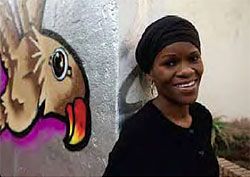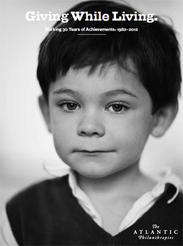Shaping History Through Support for Health and Human Rights
Resource type: Grantee Story

Nokhwezi Hoboyi. Photo: Samantha Reinders, TAC
After losing two children to AIDS, Nokhwezi Hoboyi stopped her treatment and landed in a South African hospice with tuberculosis. “A nurse told me there was life after testing positive for HIV,” Ms. Hoboyi said. Most importantly, she met the nurse’s nephew, a member of the Treatment Action Campaign (TAC) who took her to a meeting of the South African advocacy organisation for people with HIV/AIDS.
At the meeting, Ms. Hoboyi learned how to manage her antiretroviral medications (ARVs) effectively. Now, she is a vibrant woman in her 30s with a healthy son and is a TAC district organiser who educates others about ARVs. Ms. Hoboyi is also studying law to sharpen her advocacy skills.
HIV/AIDS and TAC shaped her life, just as TAC has shaped the history of the epidemic in South Africa. Founded in 1998 by activists with roots in the anti-apartheid struggle and now estimated to be the world’s largest treatment campaign, TAC’s efforts dramatically changed the government’s response to the epidemic.
Atlantic has given more than ZAR41.2 million ($5.5 million) in grants to support this hybrid health care and human rights organisation, which empowers people with HIV/AIDS to advocate for themselves. TAC achieves victories by both cooperating with and pressuring the government, filing lawsuits, organising demonstrations and civil disobedience, attracting media attention, encouraging international pressure, and using scientific and economic analyses.
TAC’s activism caused the government to increase public spending on HIV/AIDS by 1,850 per cent in 10 years; pressured pharmaceutical companies to lower the price of ARVs; and forced the government to make these drugs available to low-income people. As a result, 1.6 million people with public coverage were receiving treatment in early 2012, up from zero in 2004.
Through litigation, TAC forced the government to implement Prevention of Mother-to-Child Transmission, which uses ARVs to reduce the number of HIV-positive babies born to HIV-positive mothers. Now, 80 per cent of all pregnant women in public health care receive ARVs, reducing transmission from 8.5 per cent to 3.5 per cent in two years.
Significantly, TAC discredited a former health minister for denying the link between HIV and AIDS, and forced the government to replace him with others who implemented much of TAC’s agenda.
Finally, TAC battles stigma through powerful action such as wearing its iconic HIV+ T-shirts, and educating people with HIV/AIDS to manage their own health by using ARVs earlier to prevent major illness.
TAC now focuses on ensuring that these hardfought policies are implemented. Ms. Hoboyi is organising so that her four-year-old son, born HIV-negative thanks to ARVs, can live AIDS free in South Africa and help shape its future.
Giving While Living: Marking 30 Years of Achievements: 1982–2012
> Read more stories of impact in our 30th anniversary publication
